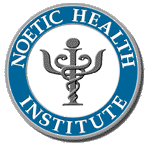The Power of Thought to Heal:
An Ontology of Personal Faith
By
Arthur Preston Smith
Claremont Graduate University: 1998
©Copyright 1998 by Arthur Preston Smith
All Rights
Reserved
We, the undersigned, certify that we have read this
dissertation
and approve it as adequate in scope and quality for the degree
of
Doctor of Philosophy.
Dissertation Committee:
David Ray Griffin, Chair
John Roth, Member
Fred Sontag, Member
Abstract of the Dissertation
This dissertation discusses the philosophical issues involved with
psychosomatic healing. It attempts to establish two theses. The first is that
psychosomatic healing is a very real, if not common, phenomenon. The second is
that it is also a natural process, i.e., it need not involve any supernatural
Divine intervention. If it involves God's action at all, then God is acting
through natural processes. Evidence from numerous sources, such as the placebo
effect, the new science of psychoneuroimmunology, scientific studies and
experiments, and historical events, is used to support the first thesis.
Although this evidence strongly supports the proposition that thoughts,
attitudes and beliefs can significantly affect health, it tells us nothing about
the interaction involved, if any, between the mind and the brain.
The apparent mystery of psychosomatic healing can be traced to two underlying
philosophical enigmas: the mind-body relationship and efficient causation as
real influence, neither of which can be resolved empirically. An overview of the
current mind-body debate in contemporary philosophy is presented, in which the
dualists and materialists, the two major contenders in this debate, are shown to
have succeeded in refuting each other. Accordingly, we must reject both
positions. The idealist alternative, the prevailing paradigm among advocates of
mental healing, is also examined, and it too is shown to be inadequate.
The apparent mystery of mental healing, as well as the presumption that it
must somehow be supernatural, are both attributed to modern philosophy's attempt
to understand efficient causation and the mind-body relationship in terms of
substance-and-attribute thinking. To understand either efficient causation in
general, or mind-body interaction in particular, we must change the context of
the discussion from one of substance and attribute to one of process and
creativity. Whitehead's philosophical model, in that it addresses this point
directly, is therefore an excellent starting point in unraveling the mystery of
psychosomatic healing.
Hyperlinked
Contents
Part
I Introduction to the Project
Chapter 1
Introduction
Chapter 2
Definitions of Terms and of Regulative Principles
Part II
Empirical
Evidence
Chapter 3 An Overview of the Empirical
Evidence
Chapter 4 Evidence
from the Placebo Effect
Chapter 5 The
Nascent Science of Psychoneuroimmunology
Chapter 6
Controlled Statistical Studies of Mental Healing
Chapter 7
Documented Evidence for Psychosomatic Causation
Part III
Philosophical Arguments
Chapter 8 Conclusions from the
Evidence
Chapter 9 Of
Ghosts and Machines: Understanding the Mystery of Mind over Matter
Chapter 10
Whitehead's Process Model
Chapter 11
Objections, Replies, and Conclusion
Download, view, or print as PDF
e-book
Dedication
This dissertation is dedicated to three people who shared with me the risks
and sacrifices required to complete it. The first of these was my mother, the
late Dr. Margaret Smith (1914-1995), who provided both financial aid and
inspiration during my graduate studies. The second is my wife, Robin Smith, who
supported us financially during my years of full-time study, and who shared
equally with me all the emotional and financial burdens involved. Moreover, her
on-going struggle with systemic lupus erythematosus dramatically demonstrated
how important and powerful the psychosomatic element in healing can be. The
third is my daughter, Ariella Smith, who seems to be growing into a wonderful
human being, in spite of the fact that her father was less available than he
should have been during the first three years of her life.
Acknowledgments
I owe thanks to many people, whose assistance was indispensable in completing
this project. First among these is David Ray Griffin, advisor and committee
chair, for his thoroughness and promptness in reviewing my work in progress --
even when it involved considerable discomfort and inconvenience on his part.
Without his on-going feedback, it would have been impossible to maintain the
standard of scholarship that this project required. I thank Professors John Roth
and Fred Sontag, for their participation in my dissertation committee, and for
their valued feedback too. I thank the faculty of both the Religion and
Philosophy departments of the Claremont Graduate University, for accepting and
supporting a student whose interests in graduate study were somewhat
unconventional. I thank my father, Dr. Carroll H. Smith, for supporting me
through my undergraduate studies, and for sharing with me his medical career
experiences, without which I would never understood what it is like to be
medical doctor. I thank Drs. Anthony Smart and Colleen Fitzpatrick, my two
physicist friends, for reviewing my work from a scientific perspective. I thank
the people at Compulink Management Center, Inc., of Torrance, CA, where I worked
during my years of candidacy, and whose LaserFiche® document imaging software
rendered my empirical research so much easier. I thank Larry Gneiting, my
personal coach, for giving me the inspiration and guidance I needed to keep
going when the project appeared to be impossible. Finally, I would like to thank
Rev. Linda McNamar, United Church of Religious Science, who, when acting as
associate dean of the Ernest Holmes College seminary, suggested that I return to
graduate school in the first place.
|
|
